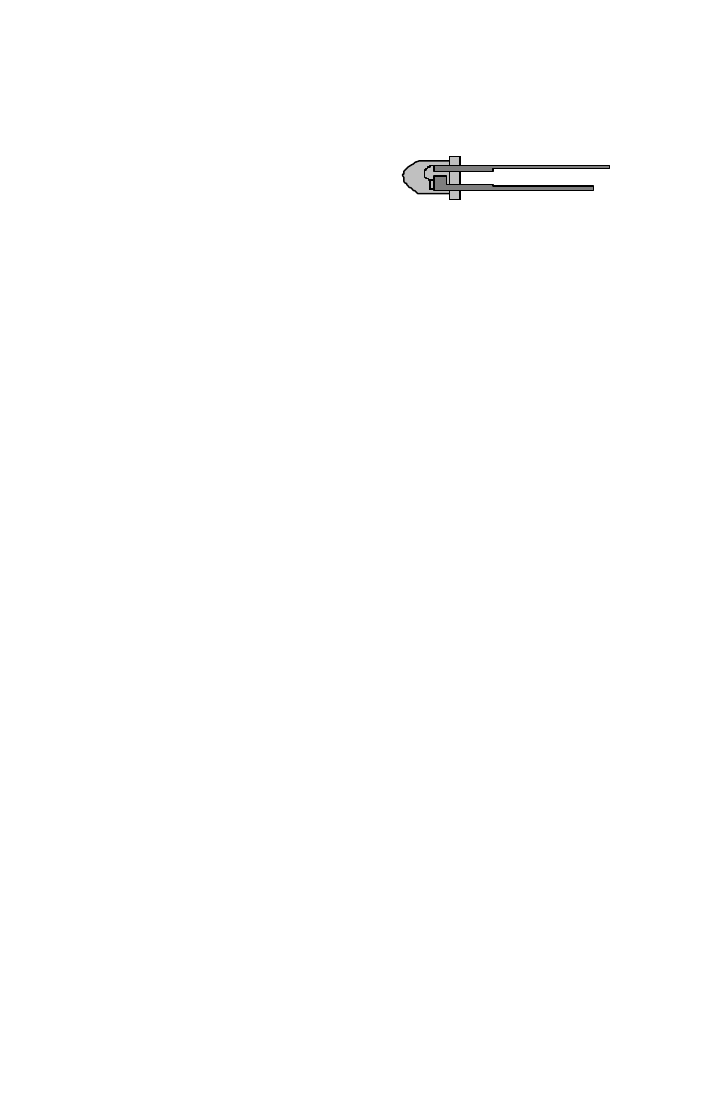
RRW1A • 12
23. Install R8, a 4.7K ohm resistor (yellow-violet-red).
24. Install Q4, a 2N3904 transistor (marked 3904). This transistor is used
to amplify the small amount of current provided from the IR detector to a
large enough amount to drive the LED indicator. The LED will blink OFF
when a signal is seen, so it has a dual use of indicating power as well.
25. Install D1 (the Green LED).
This LED will blink OFF when the
IR detector sees data to let you
know that and IR signal has been seen and is being re-sent. D2 is polarity
sensitive since it is a diode so correct orientation is a must! Look at the
diagram above. The long leg of the LED indicates the Anode while the
shorter is the Cathode; the Cathode is the larger fat section that you can
see inside of the LED case. The Cathode is also indicated by the flat side
of the LED body if you look at it on end. Note the silkscreen on the board
and the Parts Layout Diagram show the flat edge of the LED for proper
positioning. Orient the LED so its flat side is the same. Do NOT mount the
LED flush to the board. Mount the LED as high as possible, about 1 1/4”
off of the board. The LED will eventually be bent over to peek out of the
front of a the case.
26. Install R7, a 220 ohm resistor (red-red-brown).
27. Install C9, a 10 uF electrolytic capacitor (small cylindrical component
coated with plastic and marked 10). Electrolytic capacitors are polarized
with a (+) and (-) lead and must be installed in the correct orientation.
Ordinarily, only the negative side is marked on the capacitor body with a
dark band and the (-) sign clearly shown. The PC boards will usually show
the (+) hole location. Use care to ensure proper polarity. See the Parts
Layout Diagram for proper placement. The capacitor should fit snugly
down to the PC board.
28. Install VR1, the 78L05 voltage regulator. Make sure the flat side of this
component is in the same orientation as shown on the silk screen and
Parts Layout Diagram. This part works by “smoothing” out any ripple that
may reside on the non-regulated input side of the part. It also allows you
to run this kit from a wide range of input supply voltages.
29. Install D2, the large 1N4002 regulator diode. If you are using an AC
power supply, this diode helps to convert the AC source voltage to pulsed
DC. C10 (which we install last for mechanical reasons) accumulates the
pulsed DC and smoothes it out so that regulator VR1 can process it the
rest of the way and provide us with a clean power source. If a DC power
source is used, the diode provides you with reverse power protection
should the supply not be setup with a positive tip like it should.
30. Install S1, the power switch. Solder one pin and make sure the switch
A
K


















